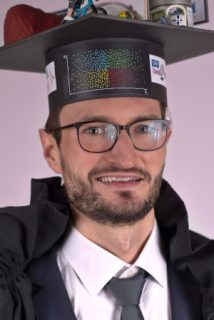Felix Lugauer-Breunig
Iterative Reconstruction Methods for Accelerating Quantitative Abdominal MRI
Abstract
Abdominal pathologies, in particular, diffuse liver disorders are affecting a rapidly increasing group of people worldwide. Non-alcoholic Fatty Liver Disease (NAFLD) parallels a global epidemic and is the most common liver disease in societies with westernized lifestyles, affecting in between 20 and 30 % of adults. It is closely connected to obesity, whose prevalence almost tripled since 1975. NAFLD comprises a wide range of disease stages, which range from steatosis over steatohepatitis to fibrosis and, eventually, cirrhosis. Diagnosis and disease stratification still requires invasive biopsy, which bears the risk of complications. With magnetic resonance imaging (MRI), a noninvasive and non-ionizing technology has evolved that is able to yield biomarkers such as fat fraction (FF), R2* or T1, allowing the diagnosis of steatosis, fibrosis and cirrhosis. A major limitation for its widespread use is that single contrasts are per se not quantitative. Instead, a series of acquisitions is required in order to derive a quantitative MR (qMR) parameter based on an appropriate signal model. Consequently, qMRI is even more time-consuming than simple soft-tissue or morphological imaging. Further challenges arise from breathing motion accompanied by any abdominal examination. Despite steady advances in accelerating Cartesian MR measurements such as partial Fourier or parallel imaging (PI), lengthy scan times either entirely prohibit qMRI in clinical practice or drastically limit spatial coverage, resolution or accuracy in order to meet a patient’s breath-hold abilities. In this thesis, we address the above limitations by combining PI with compressed sensing (CS) and domain-specific regularization in order to accelerate and enhance qMRI applications of water-fat and relaxation quantification. To this end, a local low-rank (LLR) prior is identified as a common sparsity basis among images required for water-fat quantification. Implemented as an automated and robust denoiser for multi-contrast images, it strongly reduces noise floor effects and uncertainty in FF and R2* quantification without degrading structural information. Combining this LLR constraint with spatial sparsity regularization in an iterative reconstruction algorithm for sparsely sampled multi-echo data achieves strong noise reduction and image enhancement despite a 30 % decrease in scan time as compared to the state-of-the-art. In the context of abdominal T1 mapping where accurate techniques currently cover only few slices, we developed a segmented 3-D imaging sequence based on spatiotemporally sparse sampling, which achieves whole-liver coverage within a single breath-hold. Acceleration factors of 12 and beyond are possible through a novel spatiotemporally incoherent Poisson sampling with variable density and signal enhancing through-contrast regularization. In summary, the described techniques encompass advances in domain-specific reconstruction techniques, sampling strategies and sequence programs. All algorithms were validated by volunteer studies with at least ten volunteers and integrated into the MR scanner software as application extension.
